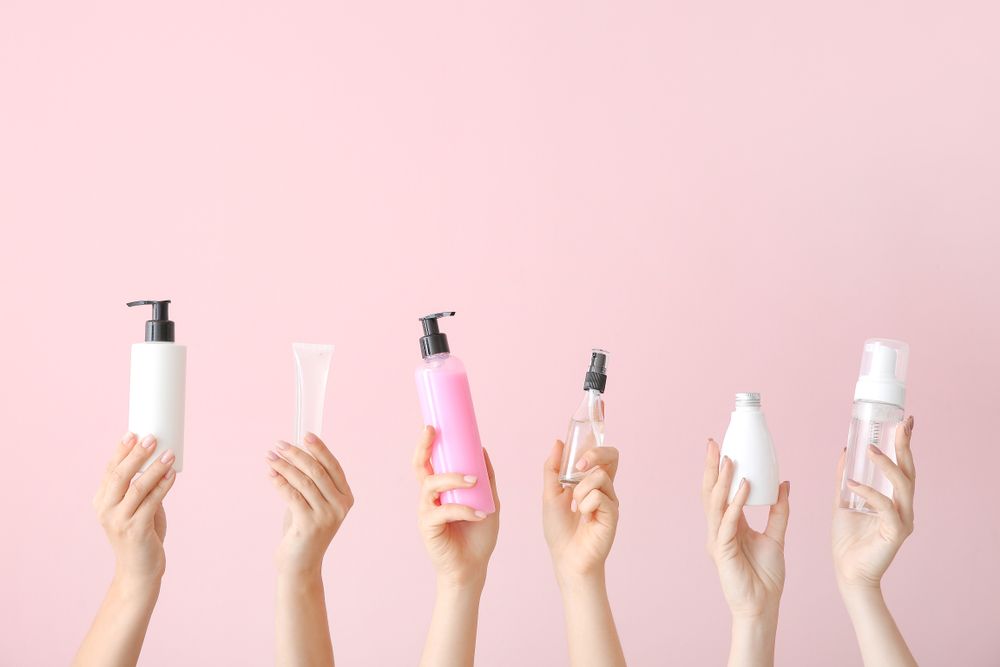Do you know the pH of your daily skin care?

We have all heard of pH. At the latest when the doctor has measured it in the urine in order to check the acid-base balance. But very few of us know the skin pH, which is actually lower than in the body, and even less that of our skin care products.
The pH level is an important parameter for the much-vaunted glow and health of our skin. As long as it doesn’t cause problems, who cares. But if redness, peeling and itching become noticeable, you should know what the pH value is like and, if necessary, reconsider your care habits. During my research, I discovered how seldom it is actually shown on products. But first a little more to understand:
Back to school
pH stands for “potential of hydrogen”), it is derived from the Latin word “potentia hydrogenii“. This differentiates alkalis from acids. The value scale ranges from 0 (acidic) to 14 (basic / alkaline. Neutral pure water is in the middle and has a pH of 7. Everything below that counts as acid, from 7 onwards the alkalis start. A pH value lower than 2 or higher than 12 must be understood as extremes that are harmful to the skin and can lead to chemical burns. This is what makes chemical peels – in this case the desired – effect. Lactic acid for example has a pH of 1.8.
Where is water, there is a pH
This also applies to the human body. If it consists of 95% water at birth, it is still almost 70% in adulthood, which corresponds to a water volume of approx. 43 liters. The skin has its own pH. According to the latest research, the healthy, so-called skin surface pH should reach 4.7 / 4.8. The previous average of 5.5 is considered out of date. An enormous challenge for cosmetics producers, because most products on the market are well above this value. In any case, the healthy environment of our skin is slightly acidic. Only then is it able to successfully ward off harmful microorganisms and other external environmental influences
Just don’t irritate!
The task of our skin care is to maintain this physiological acidity. But that’s when it often begins that we do too much of a good thing and unconsciously harm our skin rather than good. What does that mean exactly? Actually, you should avoid everything that dries them out, such as constant disinfection and frequent washing. Impossible in times like these, so at least apply a moisturizing product as often as possible. Generally avoid wash-out procedures, e.g. daily use of cleaning brushes as this will elute all of the fats / fatty acids and NHMs. It is also advisable to avoid non-physiological care (e.g. alkaline creams) and to use acidic tonics after the cleanser (mild and adapted to the skin!) has been washed off.
Latest research
The question is, is the pH shifted because certain products caused dryness, flaking and itching? Or do the symptoms indicate that the pH has changed due to age? A scientific study by the US University of California School of Medicine has shown that the pH value increases automatically from the age of 50. One explanation why more mature skin often suffers from redness. The American scientist and dermatologist Prof. Dr. Howard I. Maibach, who has been researching the pH value for more than 45 years, recommends skin care with pH 4 for. This would permanently lower the increased value and preserve the protection of the skin.
A good pH management
There are still few products on the market that keep the skin in the acidic pH range without peeling. Why it is like that? Sabine Guett, a German doctor of cosmetology, says: “It’s like baking a cake. Every ingredient, i.e. every active ingredient, has an optimum pH, which is usually between 5 and 7. If you pack the substance in an environment outside of its optimal range, e.g. in a very acidic environment, the active ingredient breaks or loses its effectiveness.“ Cream and peeling products with acids such as salicylic or fruit acids are one way to lower the pH of the skin. But you have to accept the slight peel effect for that. In some skin conditions such as acute neurodermatitis, such products must not be used anyway. If you are unsure, it is better to ask the dermatologist first. So-called buffer concentrates, which are made fat-free and acidic and absorb pH shifts of up to 9.5, are well tolerated. They are applied daily or as a treatment to the cleansed face before day care. The effect: If the skin surface or cream has a higher pH value, it is simply buffered.
Tip: If you want to know how acidic or alkaline a care product you use is, you can easily test it yourself with liquids such as toners, ampoules or serums: Buy indicator paper in roll form or as test strips and hold them in the liquid. The change in color on the indicator indicates the pH value.
photo: pixel-shot@shutterstock

CultureAndCream Author from Munich
To travel during my profession as a beauty journalist was never enough for my. Also my six month on a world trip didn’t do it. It always attracts me to other cities, foreign countries, on roadtrips and places I don’t know yet. But I am not only interested in “culture” and “cream”, I am also fascinated by people who have stories to tell . Such unique experiences I want to share with you.